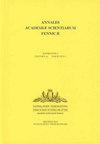IF 0.9
4区 数学
Q2 Mathematics
引用次数: 0
摘要
粒子物理学的标准模型以惊人的好水平描述了所有已知基本粒子的基本性质和相互作用,并且从它得出的预测已经一次又一次地被实验证实。然而,它的一个部分,即强核相互作用理论,量子色动力学(QCD),已被证明在计算上要求极高。特别是,在高重子密度的极限下,QCD描述的物质性质在很大程度上仍然是未知的。最近,由于来自一个遥远但非常有效的实验室——中子星的新观测数据,对致密QCD物质的研究取得了重要进展。这些极其致密的恒星的核心包含了我们当今宇宙中密度最大的物质形式,这些物质的性质反映在恒星本身可测量的宏观性质上。在这篇综述文章中,我将介绍这一活跃的研究领域,特别强调最近的努力,发现一个全新的阶段的物质-冷和稠密的夸克物质-在最巨大的中子星的核心。本文章由计算机程序翻译,如有差异,请以英文原文为准。
Femtometreistä valovuosiin: neutronitähdet eksoottisen aineen laboratoriona
The Standard Model of particle physics describes the basic properties and interactions of all known elementary particles at an astonishingly good level, and predictions derived from it have time and again been experimentally verified. One of its parts, namely the theory of the strong nuclear interaction, Quantum Chromodynamics (QCD), has however proven to be computationally extremely demanding. In particular, the properties of matter described by QCD are at the moment still largely unknown in the limit of high baryon density.
Very recently, the study of dense QCD matter has taken important steps forward owing largely to new observational data originating from a distant but very effective laboratory: neutron stars. The cores of these extremely compact stars contain the densest form of matter in our present-day Universe, and the properties of this matter are reflected on the measurable macroscopic properties of the stars themselves. In this review article, I will introduce this active field of research, placing particular emphasis on recent efforts to discover an entirely new phase of matter - cold and dense quark matter - inside the cores of the most massive neutron stars.
求助全文
通过发布文献求助,成功后即可免费获取论文全文。
去求助
来源期刊
CiteScore
1.30
自引率
0.00%
发文量
0
审稿时长
>12 weeks
期刊介绍:
Annales Academiæ Scientiarum Fennicæ Mathematica is published by Academia Scientiarum Fennica since 1941. It was founded and edited, until 1974, by P.J. Myrberg. Its editor is Olli Martio.
AASF publishes refereed papers in all fields of mathematics with emphasis on analysis.

 求助内容:
求助内容: 应助结果提醒方式:
应助结果提醒方式:


